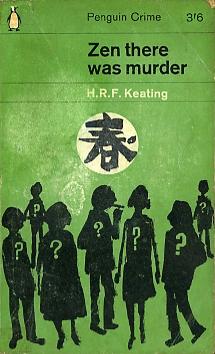Utamaro's missing wakizashi
"Books about Zen are legs on a snake"
By William Wetherall
First posted 22 October 2005
Last updated 1 August 2006

H.R.F. Keating
Thus reads the blurb on the back, telling the reader everything but who done it and why. The mystery is developed like any number of Agatha Christie stories. Seven people find themselves together to learn something about zen, study koan, and possibly achieve satori. The first chapter ends with Utamaro -- who wears a black kimono, speaks ordinary English, but says unordinary things like "Books about Zen are legs on a snake" -- leading them out of the zendo to see a toy. The toy is a sword that drew some attention when it came through customs. A journalist, who happens to be a member of the study group, reported it was famous because it had been used to commit a murder. Never, said Utamaro. It had only "killed many people in battle as it was handed down from samurai to samurai over six hundred years. And some of them will have used it to take their own lives too -- the wakizashi is the blade used for hara-kiri." The sword is in an alarmed showcase secured by experts. Utamaro has the utmost confidence in the locksmiths. In the manner of all mysteries that reveal a deadly weapon in the opening pages, we cannot help but anticipate that someone will steal the sword and use it to finally murder someone -- as opposed to just killing an opponent in battle or oneself. Plots can't get much more transparent. But like most others of its kind, it works. |